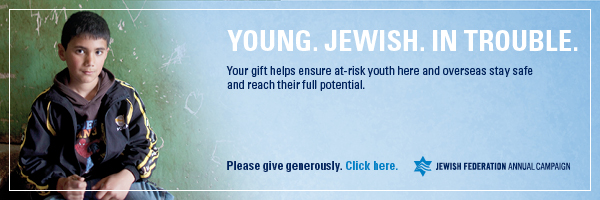This message has 842 words, and will take about three minutes to read.
Freedom 25 - Lighting the Way to Freedom
Tomorrow night we light the first Chanukah candle. Today I want to reflect on Chanukah of 1987.
Yesterday marked the 25th anniversary of the March in Washington DC for Soviet Jewry. More than 250,000 people gathered in Washington on the eve of a summit meeting between President Ronald Reagan and Premier Mikhail Gorbachev to push for the gates of the Soviet Union to open.
And open they did – in the aftermath of the march and the collapse of the Soviet Union, more than 1 million Soviet Jews left for Israel, the United States and Canada. The struggle for Soviet Jewry ranks as one of the most successful human rights campaigns, and the redemption of more than one million Jews from behind the Iron Curtain has irrevocably changed the course of modern Jewish history. The demographic make-up of North American Jewish communities is dramatically different today, especially in places like New York, Los Angeles and Chicago where the largest number of emigrants settled. The most significant impact is seen in Israel, where Jews from the Former Soviet Union (FSU) have changed the social and political landscape. As just one small example, if you look at the three major political parties in Israel, the position of “party whip” for all three is held by Jews from the FSU, and Natan Sharansky serves as the professional head of the Jewish Agency for Israel.
A key tool in the struggle for Soviet Jewish freedom was the Jackson-Vanik Amendment to the Trade Act of 1974, which penalized countries that restricted emigration. Yesterday, the US Senate passed a bill “graduating” Russia and Moldova from the Amendment and establishing permanent normal trade relations with those two nations. Both countries have a 20-year record of open emigration, and have expanded opportunities for Jews who stay to practice Judaism and participate in Jewish culture.
Twenty-five years ago I had just completed three years of professional responsibility for Soviet Jewry advocacy at the Cleveland Jewish Federation, and although I had moved on to other responsibilities, I helped coordinate Cleveland’s mobilization for the March. In the end, more than 1,800 Clevelanders traveled by plane, bus and car to participate in the Washington rally. It was an extraordinary experience to mobilize so many people, and to see 250,000 Jews march and gather together on the Mall in Washington.
I started my professional career in Jewish communal life fighting for freedom for Soviet Jewry. We organized telegram banks, community rallies, and got public officials and business people to raise the issue in their contact with Russian counterparts. We briefed tourists to the Soviet Union on how to make contact with Jews, and what they could bring with them that would sustain their spiritual and material lives.
In my office there were poster-sized pictures of various Prisoners of Zion that we displayed at community events. Most of them were young people imprisoned for teaching Hebrew. Today all those people live in freedom, or if they have passed away, they died in freedom. One of those posters was a picture of Yuli Edelstein, today an Israeli cabinet minister. Twenty-five years ago Soviet Jews were locked behind an Iron Curtain, their access to Jewish life denied. Today, the Jews of the Former Soviet Union are making vital contributions in every facet of Jewish life, and there are synagogues, community centres, Jewish museums and summer camps operating freely in the FSU.
The March on Washington and the campaign for freedom for Soviet Jewry are extraordinary examples of the power of collective action. They demonstrate what is possible when the whole community mobilizes – leaders and donors as well as the “students and housewives” the KGB sneered at. We live in a time when individual prerogative is championed, often at the expense of mutual interdependence and responsibility. But we can make a different choice. In fact, it is only by joining together through our collective community enterprise that we can tackle really big issues like creating and building a Jewish state, or gaining freedom for a million of our people.
When we light the Chanukah candles this year to mark the miracle of the rededication of The Temple, and the victory of the Maccabees over the tyranny of their day, we should reflect on the miracle wrought in our own time. We can remember that when we combine our strength together as a community and as a people, we are capable of helping create miracles.
To learn more about this extraordinary moment in contemporary Jewish history:
• View the Freedom 25 video on YouTube
• Visit the Freedom 25 website
• Read Natan Sharansky’s reflections on the March, which appeared in Wednesday’s Wall Street Journal. (If you have trouble with the link, Google "Natan Sharansky Students and Housewives vs. Evil Empire", and look for the article on The Wall Street Journal website. Incidentally, even your ability to Google this article – or anything else for that matter – is reliant on the freedom of Soviet Jewry. Sergey Brin’s family were among those who emigrated to the United States.)
Shabbat shalom!
|

